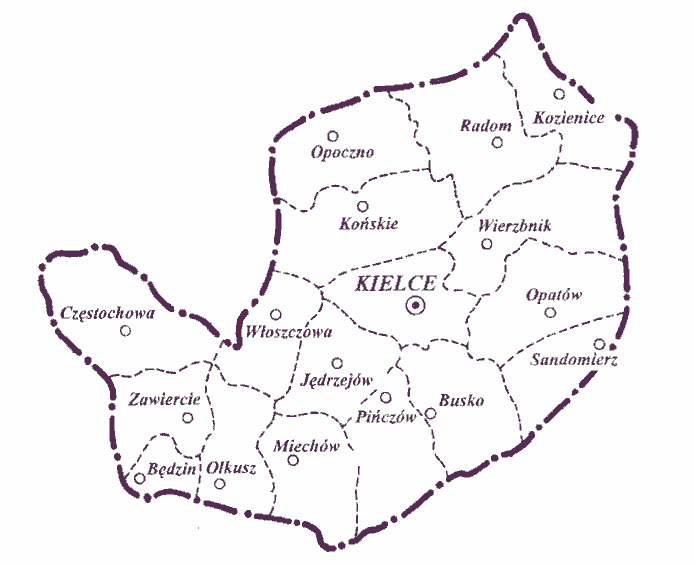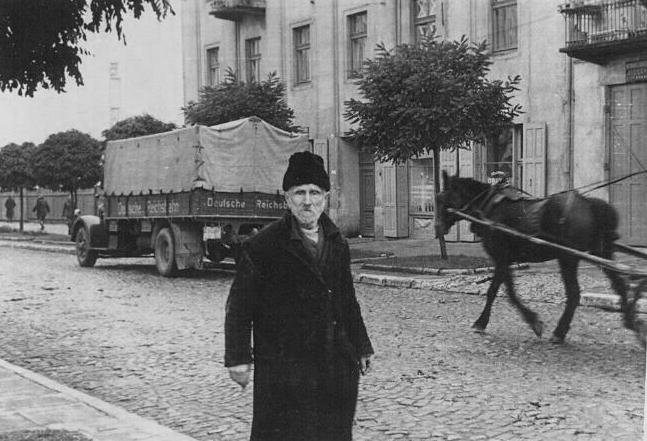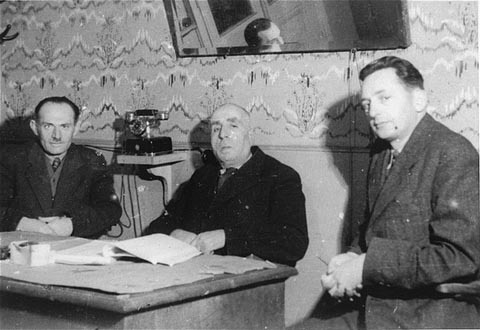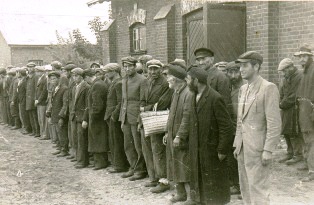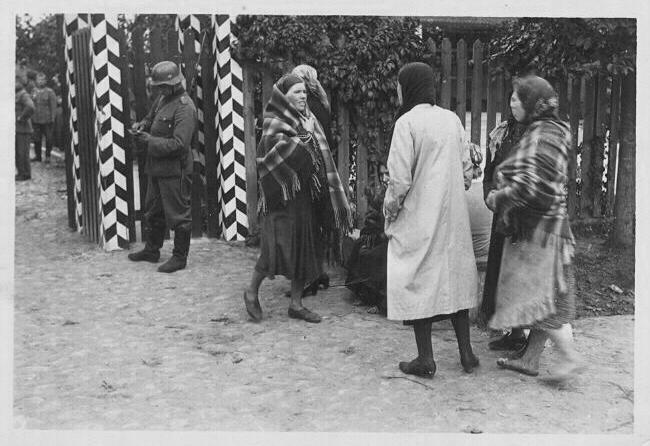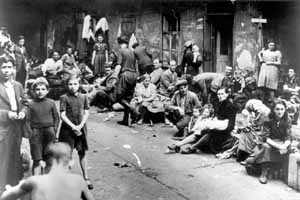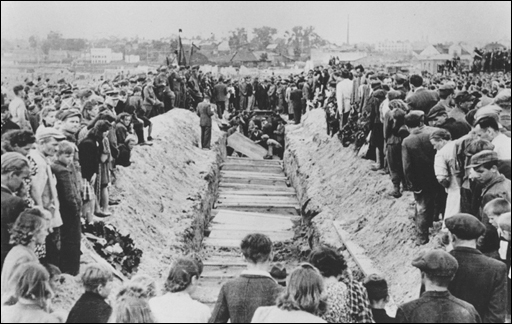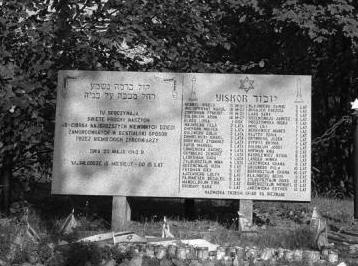Holocaust Education & Archive Research Team |
Ghettos
Introduction to the Ghettos of the Holocaust
Jewish Ghettos The Judenrat Judenrat Leaders Prominent Jews
| ||||||
Kielce
Kielce was occupied on 4 September 1939 by the German army. Approximately 24,000 Jews lived in the town, a third of all its inhabitants.
Like in all other occupied towns anti-Jewish actions took place immediately:
Lootings, expropriations, forced labour and killings were the order of the day. Soon a Judenrat was established. Its first chairman was Moses Pelc who refused to collaborate with the SS. Therefore he was deported to Auschwitz. Hermann Levy became his successor - he was killed in September 1942 by the SS. A wooden fence combined with barbed wire surrounded the ghetto which consisted of two parts:
The Big Ghetto, marked by these streets: Orla, Piotrkowska, Nowowarszawska, Pocieszki and Radomska, and the Small Ghetto - the triangle between these streets: St. Wojciech square, Bodzentynska and Radomska. 500 buildings were in the ghetto, for approximately 15,000 people. Now around 27,000 Jews had to share the rooms.
An unbearable situation, especially after arrival of 1,004 Jews from Vienna -they left Vienna on 19 February 1941. The food ration officially was 130 grams of bread per person every two days. Most of the people exchanged their clothes for food but after several months everybody starved.
Only members of the Judenrat and Jewish police had enough food and very often people noticed big parties. In spite of threatening punishments (since 1942 smugglers were shot) many people tried to smuggle food into the ghetto. After the arrival of the Jews from Vienna the food prices increased to a very high level.
Soon there was no more official religious life in the ghetto. The synagogue was changed into a storage building for grain and furniture. The prayers' homes were demolished. People who tried to organize a secret religious life were reported to the police by Germans or Jewish collaborators.
Before the liquidation of the ghetto, the Gestapo organized an Aktion "against Polish officers and communists" in spring 1942. During this action several Jewish doctors and members of the intelligentsia were shot, others arrested and deported to Auschwitz. In fact the Gestapo wanted to liquidate all people who theoretically could be leaders of the resistance in the ghetto.
This indeed was common practice, prior to large scale deportation actions. The ghetto liquidation took place from 20 - 24 August 1942.
On the first day around 7,000 people were deported to Treblinka. Every Jew could take along 20 kg luggage but in fact many people were so surprised by the "action" that they went to the assembly point without suitcases. On Okrzeja Street the selection took place. Old people, invalids and the sick were shot on the spot.
On 22 August 1942 500 Jews were executed in course of the selection. On 23 August 1942 the SS ordered the doctors to kill all patients from the Jewish hospital. Jewish doctors were forced to kill hundreds of patients in the hospital, by lethal injections.
Around 20,000 - 21,000 Jews were deported to Treblinka extermination camp where they perished. Around 1,200 Jews were killed in the ghetto during the "action".
The SS plundered the Jewish property: Clothing, linen, equipment of workshops and furniture were stored in special buildings in the center of Kielce.
The prisoners had to segregate the plundered Jewish property and to clean the ghetto area. According to testimonies they had to segregate also the clothes which were delivered from Treblinka death camp. The camp existed until spring 1943. Until that time groups of Jews were deported to work camps in Starachowice, Skarzysko-Kamienna, Pionki and Blizyn.
In March 1943, during a selection in the Kielce camp, the SS killed all Jewish doctors and their families, and in May 1943 a group of children. After the May selection the Germans established several work camps:
After the war around 150 Jews left their hidings and returned to Kielce. They found a place in their former parish hall, waiting for a possibility to emigrate to Palestine.
In June 1946 they were accused of having committed a ritual murder on a missing Polish boy. On 1 July 1946 a furious crowd gathered round the building and on 4 July 1946 they killed 42 Jews.
The drama was stopped by Polish troops. Seven ringleaders and killers were sentenced to death. The missing boy turned up again in a nearby village... Until today historians discuss who provoked this anti-Jewish riot. Many inhabitants participated in the pogrom and around 100 people were arrested by the communist police; among them people who did not participate in the crime but being known as anti-communists.
Still today some people suspect that the pogrom was provoked by communists for eliminating opponents of the new regime in Poland.
As a result most remaining Jews in Poland and other communist countries emigrated mainly to Palestine / Israel. For the minority that remained normal Jewish life in Poland had changed forever.
Encyclopedia of The Holocaust – published by Macmillan Publishing Company New York 1990. Robert Kuwalek Holocaust Historical Society
Copyright: Robert Kuwalek H.E.A.R.T 2007
|
